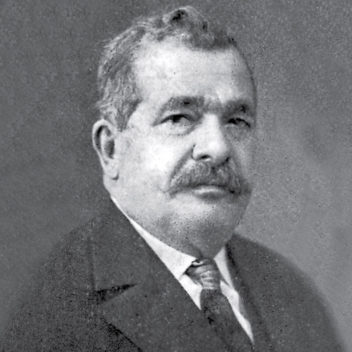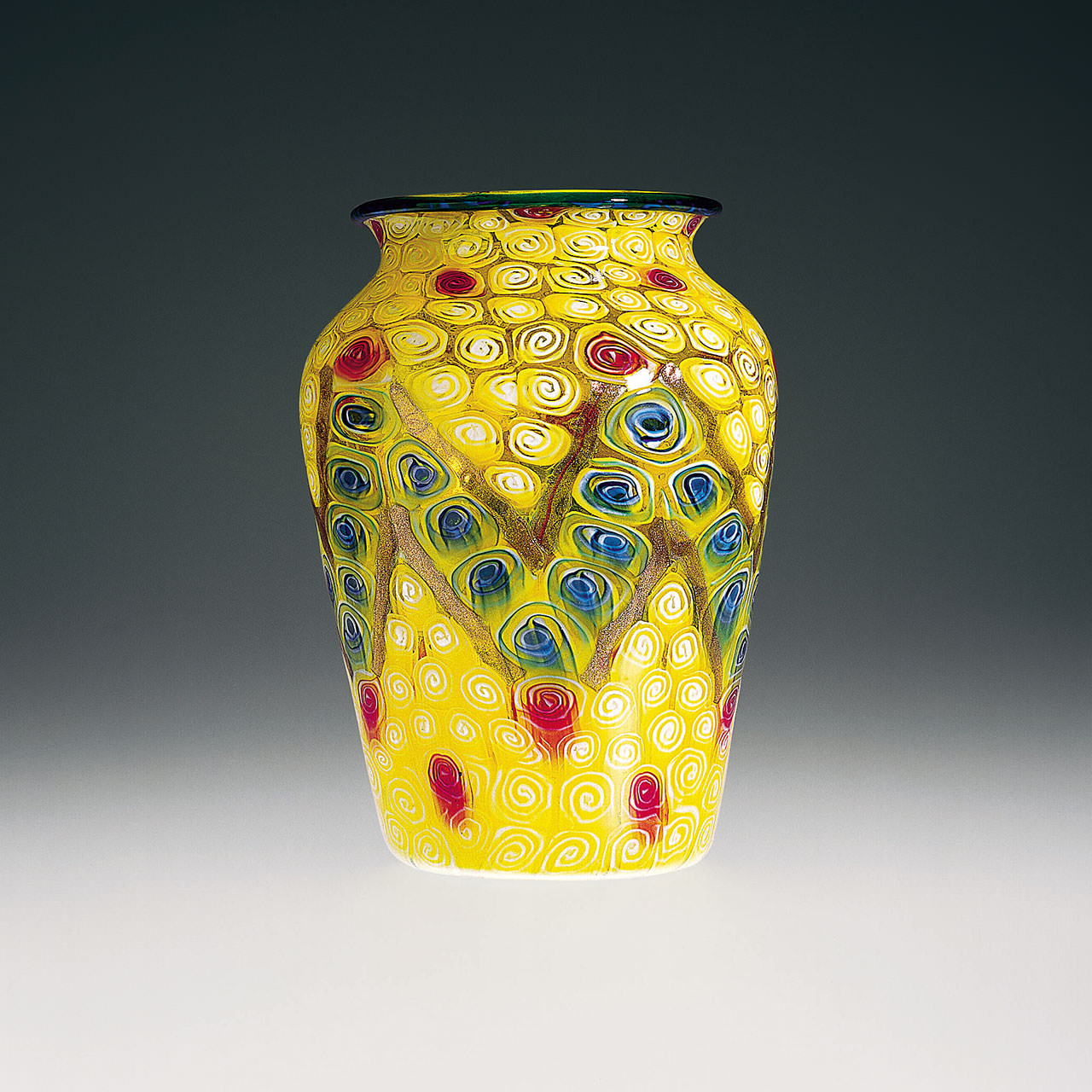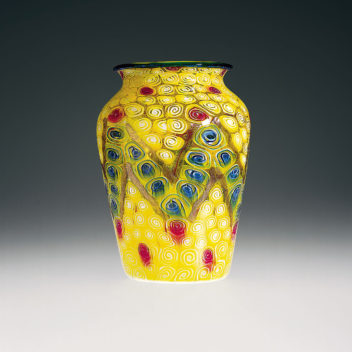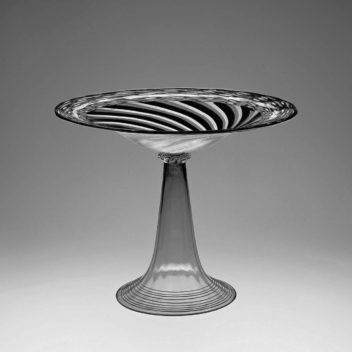
Giuseppe Barovier 1853–1942
Giuseppe Barovier went to work at the Compagnia di Venezia e Murano at a very young age and soon, due to his exceptional skills, became a maestro. He distinguished himself in various fields, from the decoration of blown pieces to the execution of murrine glass to chandeliers. In 1877, he left the Compagnia di Venezia e Murano to follow Antonio Salviati to his new glass workshop called Salviati dott. Antonio, where he worked with his brother, Benvenuto. After the Baroviers took over the ownership of the furnace in 1883, renaming it Artisti Barovier in 1890, Giuseppe became maestro and designer with his brother. Among his many creations that deserve mention are his refined murrine, which the Artisti Barovier presented at the Cà Pesaro exhibitions. When Artisti Barovier was liquidated in 1919, he, his brother Benvenuto, and their sons founded the Vetreria Artistica Barovier & C., where he worked until the end of the ‘20s.


